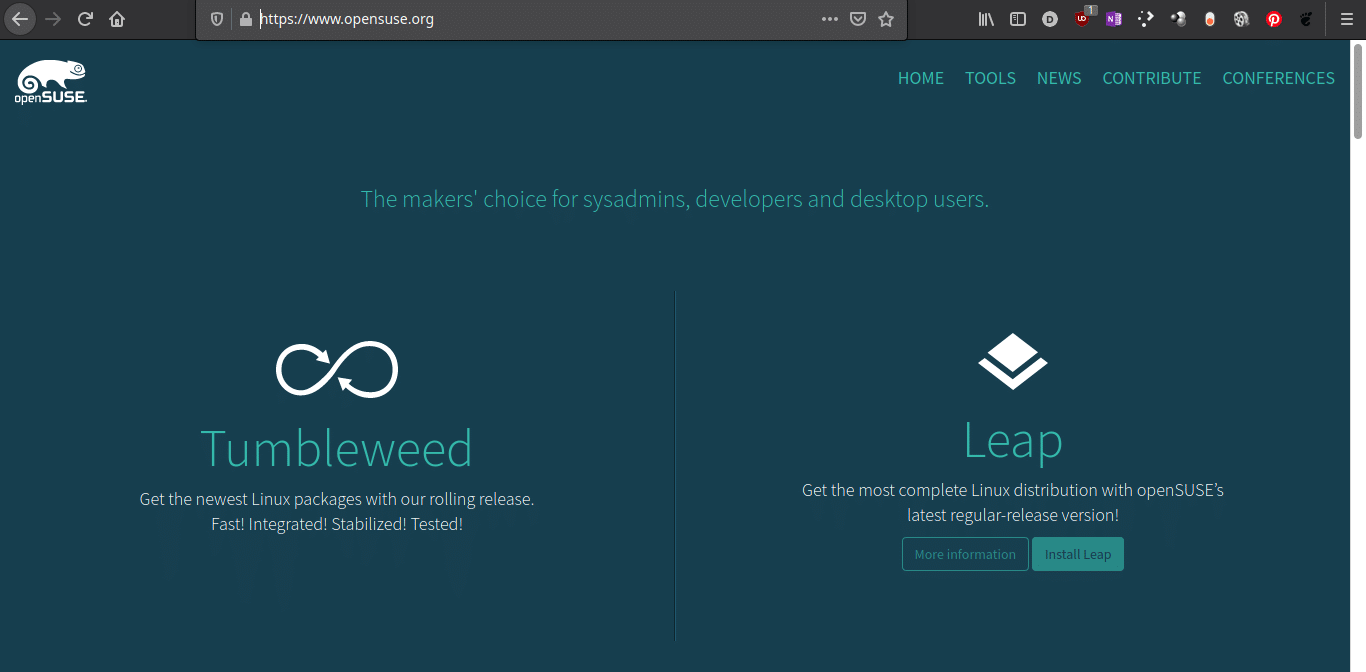
Since Isaac ad early last month the developer availability of openSUSE Leap 15.3 until today, more details and screenshots of its characteristics have been known. Let us remember that the release is scheduled for tomorrow.
These are interesting enough to justify a review of the most salient characteristics of its history.
The two openSUSE
- openSUSE Leap: Regularly released in the style of Ubuntu or Fedora but with annual frequency
- openSUSE Tumbleweed: This version adopts the Rolling Release model similar to Arch Linux or Manjaro. This means that it always contains the latest software as it receives updates every time a software has a new version.
openSUSE Build Service
openSUSE develop your distributions in the openSUSE Build Service (OBS), more specifically in the so-called Factory repository. It is in this repository where the new versions of the packages that will be part of the new versions are first entered.
El openSUSE Build Service is the public instance of the Open Build Service (OBS) which is used for the development of the openSUSE distribution and to offer packages created from the same source for Fedora, Debian, Ubuntu, SUSE Linux Enterprise and other distributions.
Quoting the project wiki:
The Open Build Service (OBS) is a generic system for building and distributing packages from sources in an automatic, consistent and reproducible way. It makes it possible to publish software for a wide range of operating systems and hardware architectures.
Brief history of openSUSE
The roots of what tomorrow we will know as openSUSE Leap 15.3 must be traced back almost to the beginnings of Linux when Roland Dyroff, Burchard Steinbild, Hubert Mantel, and Thomas Fehr founded the System and Software Development Corporation. If you are wondering what SUSE means, it is the acronym for the name in German.
The first Linux-related product produced by the company was a distribution derived from Slackware. The second in another based on Jurix.
Already into the 21st century, Novell, a manufacturer of networking hardware, He decided that the software his products required would run under Linux. As part of that new policy, they bought SUSE.
Under Novell Ownership The first version of openSUSE was released in 2006.
The separation between versions began to occur in 2011 when Greg Kroah-Hartman, then working for Novell, decided to create a set of optional updates that could be installed on top of the regular version of openSUSE that we know today as Leap.
With the release of openSUSE 13.2 in November 2014, two of openSUSE's open source projects, 'Tumbleweed' and 'Factory' were merged into a single openSUSE rolling release under the name 'Tumbleweed'
The Factory repository continues to exist within the OBS. The core packages of the system are subjected to automated testing. When automated tests are complete and the repository is in a considered stable state, then sync with replicas and openSUSE Tumbleweed is updated. Each of these updates typically occurs two to three times a week.
When SUSE decided to release the SUSE Linux Enterprise (SLE) sources for the community to use and help offer a distribution based on them, the openSUSE Project decided that the version number of the next regular release would become 42 and the name of the original distro would change to Leap. And so the successor to openSUSE 13.2 was openSUSE Leap 42.1.
Why 42.1?
The number 42 is a reference to the book The Hitchhiker's Guide to the Galaxy. The answer to the ultimate question about life, the universe, and everything else. 1 was the reference number of the Service Pack for version 12 of the Mother distribution.
SUSE and openSUSE later decided to go back to traditional numbering so now we are in branch 15.
The traditional distribution is called Leap (jump) because the user jumps from one version to the other while Tumbleweed is that plant that is usually seen rolling in movies to show that it is a desert space.
Novell was not a hardware manufacturer, it was network software called netware.
"Novell, Inc., is one of the largest computer networking firms in the world, offering operating software, network management software, Hardware, and services. Founded in 1980 as Novell Data Systems, a personal computer manufacturer, the firm spent its venture capital on design hardware, leaving little money for marketing. "
»Though Novell was primarily a hardware maker at the time, Noorda felt that its most viable product was an operating system that enabled personal computers to share peripherals such as printers and disk drives on a local area network (LAN). The firm subsequently terminated its hardware division and concentrated on networking. »
http://www.fundinguniverse.com/company-histories/novell-inc-history/
«